When John Hughes, the fourth archbishop of the New York archdiocese, died in January 1864, he was sure that everything he had laboured so hard for over the last 30 years had come to nothing.
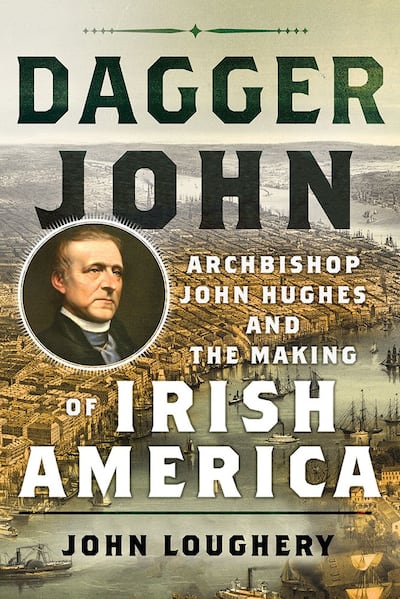
The New York draft riots in the summer of 1863, a largely Irish working-class protest against the federal government’s new conscription policy, had set Manhattan ablaze, resulting in murderous gang violence and vandalism on a scale the city had never seen. The “Celtic scum”, as one prominent New Yorker put it, had shown their true nature and, yet again, their unfitness for citizenship and respect.
In his despair, Hughes was wrong, of course. He couldn’t have known that by the end of the century the ugliness of the Civil War-era riots would be forgotten, Catholicism would be the country’s largest religious denomination, and Irish Americans would occupy a secure place in the halls of power. He certainly couldn’t imagine that his adopted homeland would one day elevate an Irish Catholic to the White House. But those are developments for which he deserves some credit.
Hughes came to America from Co Tyrone in 1817, following the path his father and older brother had taken the year before, landing in Baltimore with a carpetbag of clothes and about enough money to last a week. He found work as a manual labourer. With no formal education, he had to talk his way into a seminary, but his rise in the church once he was ordained was rapid.
In 1838, Hughes left his parish in Philadelphia and took the helm of the troubled New York archdiocese. He was a forceful public speaker, he had limitless confidence and energy, and the Vatican felt that he was the man for the job. Pope Gregory XVI knew what he was doing.
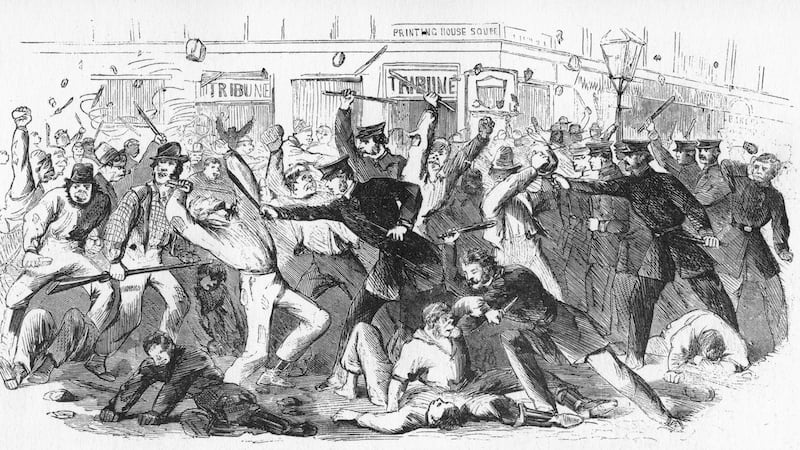
The situation in New York would have crushed a less determined man. The collective debt of the diocese to the city’s bankers was a staggering $300,000, and many churches were on the verge of foreclosure. There weren’t enough priests to serve the growing Catholic population or nuns to staff Manhattan’s few overcrowded orphanages and parochial schools.
The 1840s brought worse. Even before the Great Famine saw boatloads of unwelcome starving families from Ireland pour onto America’s shores, an anti-Irish, anti-Catholic backlash had set in. Churches and convents were burned in riots in several states, and a torrent of abuse in print warned Americans that Rome had designs on their freedom. Most Catholic priests didn’t wear the Roman collar on the streets in urban areas for fear of assault. Irish Catholic bishops in the main took an approach to these calamities that called for turning the other cheek. Not John Hughes.
As he told his superiors in Rome, Americans only respected strength, clarity and confidence, and he intended to provide that. A people under siege were more likely to feel a sense of community than a people who were complacent and respected. In that case, hostility could serve a purpose.
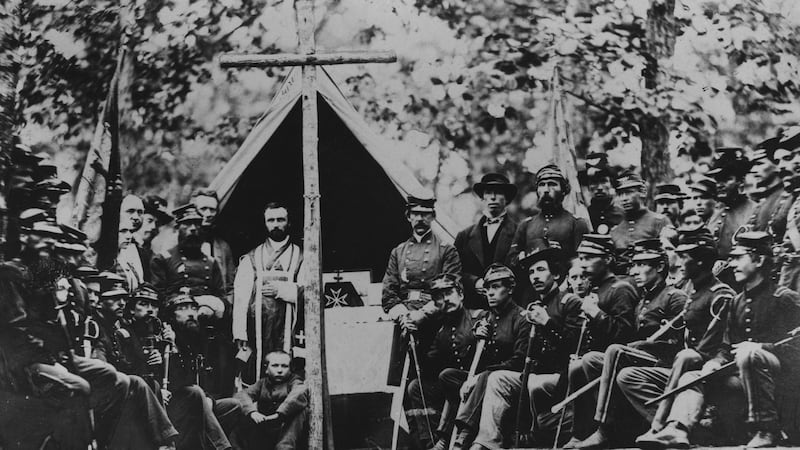
Hughes hated Andrew Jackson, hero to many of the Irish, but he saw the point of cultivating the style of a leader who was self-dramatising, never backed down, relished a fight, and was tireless in promoting his agenda.
Hughes’s agenda was focused on three concerns. Ethnic assimilation was one. He urged his countrymen to do all they could to be perceived as patriotic citizens. That meant steering clear of the abolitionists, curbing their endless street brawls, and taking up arms for the Union during the Civil War. The New York archbishop was not a pacifist, and his support was much appreciated by President Lincoln. At the same time, he wanted immigrants from Ireland to retain their spiritual attachment to their birthplace and cultivate pride in Ireland in their children.
Education was Hughes’s second great preoccupation. He loathed the city’s public school system, which belittled the Irish and used textbooks that derided the pope, and his hope was to initiate a growing parochial school movement. That proved more of a challenge than he expected. He was, however, the founder of Fordham University and, to his pride, his sister (a nun) founded the College of St Vincent.
Finally, bringing more immigrants into the Catholic fold was an equally important concern. Hughes consecrated more than 100 churches in New York State and New Jersey in his 25 years as head of the archdiocese. St Patrick’s Cathedral was to be his crowning achievement, though he knew he would not live to see its completion and the Civil War brought all construction to a halt.
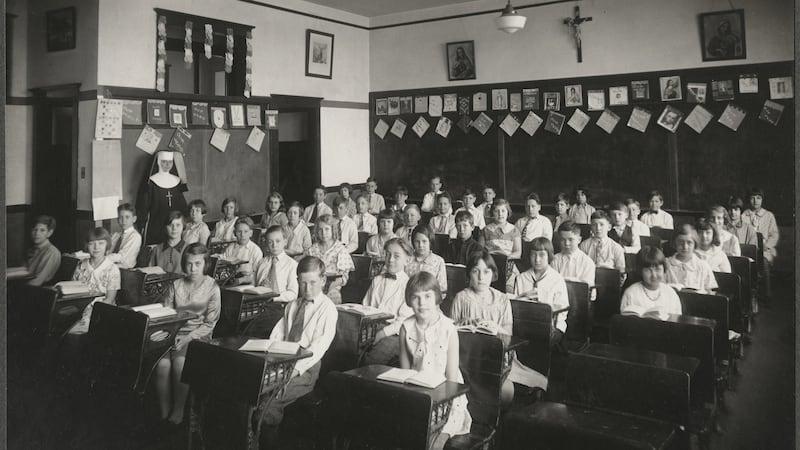
Even today, as in his own time, some of the choices Hughes made have been questioned. Did a city with so many destitute Irish Catholic immigrants need a costly cathedral at that moment? Was it right to emphasise education to the extent he did when more basic charity needs were unmet?
Hughes’s view was that education was the surest way out of poverty. No Catholic prelate was more vocal on that subject, and no one was a more aggressive fundraiser for the cause. Build the school before the church, if you have to, he told his priests. More and better schools, more and better teachers, would reduce the crime rate, make the Irish more employable, and allow Catholic Irish-Americans to live a more economically stable, spiritually grounded life.
About “his” cathedral, he had no doubts, either. It was being built for the glory of God, and it was being built to provide his “flock” with a much-needed symbol of religious commitment, cultural identity, and ethnic unity. There was never any question about which saint it would be named after.

Writing a full-length biography of John Hughes would not have been possible several years ago when access to the archives of the archdiocese was limited for outside researchers. A book about Cardinal Spellman in the 1980s, as much exposé as biography, left a certain wariness in its wake. As a result, the number of major biographies of American Catholic figures can be counted on two hands. Fortunately, upon his arrival in New York, Cardinal Dolan insisted that any narrow gate-keeping approach had to go.
The attitude of the Catholic Church toward its own heritage is changing radically at the moment everywhere in the United States. Parishes are being asked by their bishops to do more to preserve their records, and diocesan archives are processing their collections more diligently and welcoming diverse scholars and writers. A deeper, richer understanding of the role of the church in American history will be the fruit of that effort.
John Hughes is the perfect example of a man who deserves to be better known both for what he accomplished in his time and for the issues his struggle raises. A flamboyant, authoritarian leader, he had plenty of faults. He also had a clear-eyed sense of his mission. His goal was a people who saw themselves simultaneously as good Catholics, loyal Americans and proud Irish-Americans.
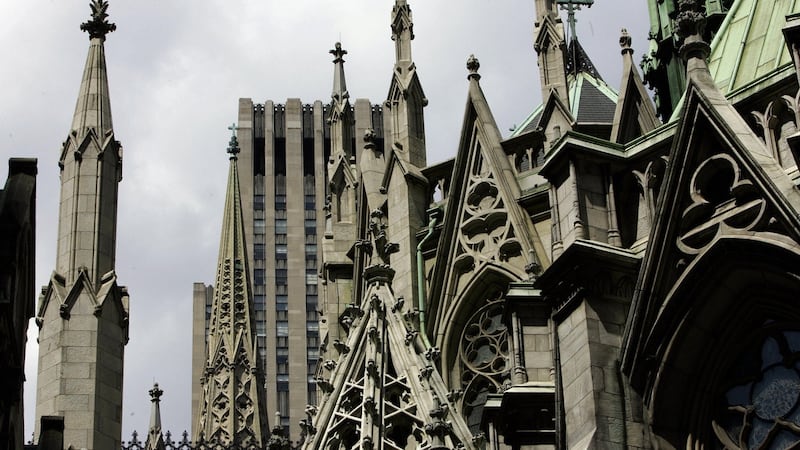
The belief in the value of a hyphenated identity has taken a hit over time, though. The American capacity to absorb newcomers and homogenise diverse cultures is proving a challenge to those who want to honour their immigrant roots even as the US proves less hospitable to immigrants in current days. Donald Trump’s America would be yet another source of despair for John Hughes.
- John Loughery is the author of the recently published Dagger John: Archbishop John Hughes and the Making of Irish America. An earlier biography, John Sloan: Painter and Rebel, was a finalist for the Pulitzer Prize




















